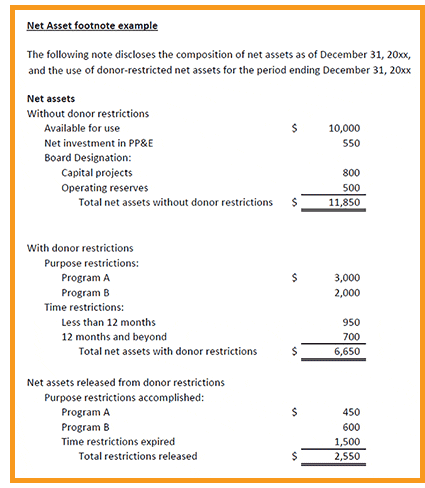 By Brittany Bischoff, Senior Accountant, Clark Schaefer Hackett
By Brittany Bischoff, Senior Accountant, Clark Schaefer Hackett
The current not-for-profit (NFP) financial reporting model has been in place since 1993, but does it work in today’s environment? Over the last several years, experts have questioned whether the current model accurately addresses the unique accounting needs of NFPs and the users of their financial statements. As in the for-profit world, there have been concerns about the comparability of organizations and their financial results, liquidity and overall performance. In response to these concerns, the Financial Accounting Standards Board (FASB) has issued a “Proposed Accounting Standards Update.”
To help you start to digest these modifications, we have provided a summary of the key updates and changes in this proposed standard. While these changes are not yet final, it’s reasonable to assume that some, if not all, of the adjustments will need to be implemented by your organization in the next few years. Understanding them now will help you prepare for the future.
 Net Assets
Net Assets
Under the new standard, NFPs would reduce net asset classes from three categories (unrestricted, temporarily and permanently restricted) to two categories (with donor imposed restrictions and without donor imposed restrictions). The two classes would be reported on the Statement of Financial Position, and footnotes (see example to the right) would include a detailed makeup of the two categories, which would provide information about the nature and timing of restrictions, or lack thereof.
Statement of Activities
The Statement of Activities would be broken into two major sections 1) operating activities and 2) non-operating activities. Operating activities and restrictions would be determined based on mission and availability dimensions. The mission dimension identifies which sources of revenue are used for carrying out the purpose of the not-for-profit, and these activities would be defined as operating activities. Investing and financing activities, for example, would not meet the mission dimension criteria, and would be classified as non-operating activities.
The availability dimension identifies internal (board designations) and external (donor restricted) restrictions that limit the availability for current use until restrictions are met. While there are several presentation styles, the main goal of the Statement of Activities would be to show the availability of revenues (broken out between operating/without donor restrictions and with donor-restricted funding).
Transfers out of operating activities and transfers into operating activities would be required to be reported separately, after a subtotal of operating activities and non-operating activities. Entities would have the option to use a two-statement approach to break out the intermediate measure of operations.
Expense Reporting
Expenses would be reported by both their natural and functional classification and would require an analysis of expenses by nature and function in one location. The preparer would have the flexibility to choose the location of the analysis (i.e., Statement of Activities, Statement of Functional Expenses or a schedule of functional expenses in the footnotes). NFPs would also be required to include a description of the method used to allocate costs among program and support functions.
Voluntary health and welfare organizations would no longer be required to present a separate Statement of Functional Expenses, but would be permitted to continue using the statement to present the natural and functional classifications.
Investment Returns
The presentation of investment returns net of expenses on the Statement of Activities would be required, along with a footnote disclosure to detail the types and amounts of investment expenses.
Statement of Cash Flows
NFPs would be required to use the direct method of reporting cash flows; however, a reconciliation of the change in net assets to cash flow from operating activities would no longer be required. Also, certain items on the cash flow statement would be reclassified to better align with categories used, as shown here:
|
Description: |
Current Category |
Proposed Category |
|
Cash gifts with donor-imposed restrictions (to be used to purchase long-lived assets for operating) |
Financing |
Operating |
|
Cash proceeds from sale of long-lived assets |
Investing |
Operating |
|
Cash dividends and interest income |
Operating |
Investing |
|
Cash payments of interest expense |
Operating |
Financing |
Note disclosures (not specifically related to one statement)
NFPs would be required to provide quantitative and qualitative information useful in assessing liquidity of the entity. Quantitative information would include the total amount of financial assets, non-current financial assets and total amount of financial liabilities due within the time frame defined in the qualitative information. Qualitative information would include a description of the entity’s time horizon (defined timeline for financing activities) and how the entity manages its liquidity based on the time horizon.
Underwater Endowments
Due to changes in market positions, and the ability to continue to spend endowment dollars under UPMIFA even if the value of the gift is less than the original gift, some NFPs find that their endowments are “underwater.” Underwater endowments would have to be reported under the ‘with donor restrictions’ class of net assets rather than as a component of unrestricted net assets, as currently required. NFPs would also be required to disclose the board’s policy for spending underwater endowment funds, the original gift amount and the fair value of the underwater endowment funds in aggregate.
Effective Date
These proposed changes would be required to be applied on a retroactive basis. In the initial year of application, annual financial statements would disclose the nature of any reclassifications or restatements and their effect, if any, on the change in net asset classes for each year presented.
Since this is a proposed standard, an effective date has not yet been defined. The CSH Not-For-Profit team will continue to monitor these developments and provide updates about these changes as soon as they are available. In the interim, please contact us if you would like to discuss how the new standards might affect your organization.
